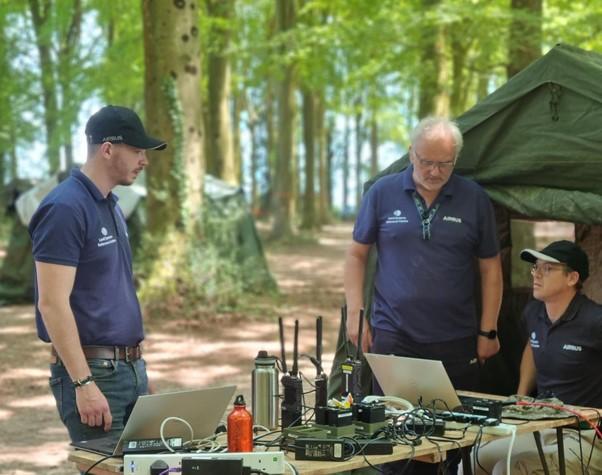The Land Systems Reference Centre Project supports Army Warfighting Experiment

The Army Warfighting Experiment (AWE) is an annual opportunity for new and emerging technologies to be showcased to the Ministry of Defence in order to understand how they might be used by the deployed Warfighter. Over the next 2 years this British Army flagship experimentation programme will deliver the Urban Series, focusing on operations in the urban environment in order to demonstrate the future force requirements that might be considered in the 2025 Integrated Review.
The Airbus team based at the Land Systems Reference Centre (LSRC) has supported the AWE initiative since 2020 when the need for a MOD owner integration network was first identified. By providing an independent communications network for the experiments, participants can operate across vendors and focus on showcasing their technologies, rather than spending time resolving communications issues. The Airbus team are currently finalising plans to support AWE 2023, titled Blunt & Dislocate, which seeks to focus on Manoeuvre and is scheduled to run in the Autumn.
Last year, for AWE 2022, the focus of the experiment was ‘Sustain & Protect’. This aimed to examine how the British Army sustain and protect at Brigade and below in the urban environment. Sustain is based around topics such as administration, logistics and medical and vehicle extraction, whilst the Protect element relates to physical and non-physical protection including the use of counter-Unmanned Aircraft Systems (cUAS) and counter Cyber & Electromagnetic Activities (cCEMA).
Originally developed by Airbus Defence and Space for use during AWE20, the MANNA system provided access to a Battlefield Management Application (BMA), Voice over IP (VoIP) capability, Wi-Fi connectivity and network edge security incorporating a Demilitarised Zone, along with the provision of 60x User Access Devices (UADs). This capability was subsequently enhanced to include the addition of a MANET (StreamCaster) radios, a RADWIN Point to Point, and Point to Multi-Point range extension sub-system, external ruggedised Wi-Fi Connectivity and ruggedized tablet computers. For Sustain and Protect the development has continued apace, with the system architecture being uplifted to improve resilience reliability and usability.
“The LSRC, is a truly unique capability within the Ministry of Defence and we are proud to again be contributing to the annual AWE event by providing the critical comms infrastructure,” said Richard Budd, Head of UK and US Secure Communications at Airbus Defence and Space.
About the LSRC
In 2019, the UK MOD awarded a contract to Airbus Defence and Space to manage test and reference services to support the delivery and assured release of Command, Control, Communications, Computers, Intelligence, Surveillance, and Reconnaissance (C4ISR) capability for deployed operations around the globe. Located at Blandford Camp in Dorset, the Royal Corps of Signals’ headquarters, the LSRC provides the MOD with a through life ‘Systems of Systems’ Test and Reference service. It provides an appropriate test, integration and transition capability that assures release packages for introduction onto the Defence Network and in support of operations and exercises. The LSRC can provide support and specialist advice for deployed and base ICT capabilities throughout their lifecycle. The LSRC has the capability to test applications and application upgrades on reference systems to assess their impact on other applications and the network as well as the network’s impact on the application.